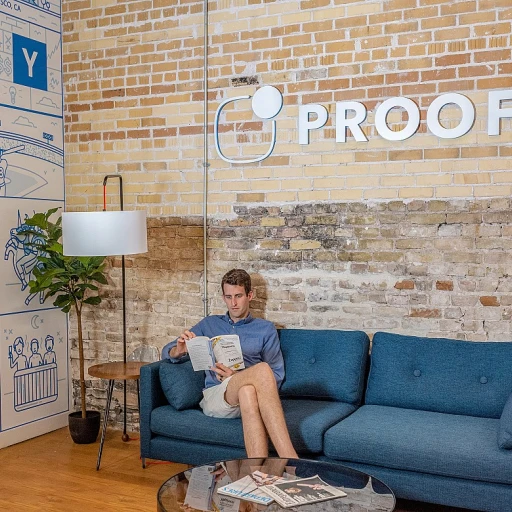
Understanding the Home and Workplace Balance
Achieving Harmony between Job Obligations and Family Life
In the dynamic landscape of UK companies, achieving a healthy balance between work and home life is more crucial than ever. Balancing home and workplace expectations involves an intricate dance that employees and employers must navigate carefully. For employees, striking this balance is not merely about working a set number of hours; it's about managing occupational health, maintaining productivity, and ensuring that time at the home office or work office does not encroach upon personal and family commitments.
Remote work and flexible work arrangements have brought newfound flexibility yet created unforeseen pressure on work life. These transformations have led to blurred lines between professional and personal spheres. The convenience of working home offers the luxury of more home time, but it also demands clear boundaries to prevent work from permeating every aspect of life.
Employers are integral to fostering this intricate balance. They must cultivate an inclusive work environment that supports workers in achieving harmony. This might involve evaluating the cultural nuances of the workplace and understanding the subdivision of work responsibilities amongst teams. Companies can provide support and employer-led initiatives that encourage employees to take ownership of their life balance.
This balancing act requires office managers to implement strategies that address the needs of both full-time and remote workers. Monitoring employee well-being and offering flexible job arrangements are merely starting points. An effective approach incorporates understanding the individual needs of employees, thus reinforcing a support structure that enhances overall job satisfaction and productivity.
For a deeper dive into helping UK office managers balance these dynamics, consider exploring further insights on effective workplace strategies.
Flexible Work Arrangements
Embracing Flexible Work Schedules
Companies in the UK are increasingly recognizing the need to implement flexible work arrangements to maintain a healthy work-life balance. Traditional nine-to-five office hours are no longer the only option for employees. There has been a marked increase in the adoption of flexible work policies, such as remote work, compressed workweeks, and flexible hours, allowing employees to work from home or during hours that best suit their personal and family needs. Many employers have realized that allowing their employees to set their schedules improves job satisfaction and productivity. It also helps in reducing the stress associated with balancing home responsibilities with workplace expectations. Employees working remotely can experience an improved life balance, as they spend less time commuting and more time with their families.Creating a Supportive Work Environment
Flexible work arrangements also need to be supported by a healthy work environment, whether at the office or home. This includes ensuring that remote employees have access to necessary resources and technology to perform their tasks effectively. Employers can offer ergonomic equipment for home offices, access to online collaboration tools, and regular check-ins to foster a sense of belonging and support among remote workers. Moreover, nurturing a culture that respects home time is crucial. Encouraging employees to disconnect from work after business hours and respect home life boundaries rather than expecting constant connectivity can prevent burnout and promote occupational health. Such support not only benefits the employees' well-being but also reflects positively on productivity and the workplace atmosphere. For more insights on enhancing your workspace and how comprehensive planning can aid in balancing these dynamics, you can visit this insightful resource. It provides guidance on creating a work setting that seamlessly integrates with a home work environment, offering expansive desk planners as a tool to enhance productivity both at home and in the office.Technology's Role in Bridging Home and Workplace
Technology as a Catalyst for a Seamless Transition
The integration of technology into workplace dynamics has fundamentally transformed how people engage with their jobs. As the UK shifts increasingly towards integrating remote work options, many employees and employers are leveraging advanced digital tools to sustain productivity and maintain connectivity. Technological advancements facilitate a smooth transition between home office and traditional work environments. Remote workers can balance their work life effectively with platforms that enable efficient communication and collaboration. Tools like video conferencing, project management software, and real-time messaging apps create a functional bridge between team members working home and those in a physical office work setting. This connectivity empowers employees to perform their jobs efficiently while enjoying the benefits of flexible work arrangements. Furthermore, productivity tools enable the flexible allocation of working hours, supporting employees in managing both professional expectations and personal commitments. By accommodating diverse schedules, technology encourages an inclusive work environment that respects the personal lives of workers, fostering a healthier life balance. Incorporating digital solutions also aids in monitoring occupational health by providing mechanisms for employees to receive prompt support if they face challenges adapting to remote work. Timely assistance not only enhances job satisfaction but also strengthens the overall work environment. For office managers, employing technology in these ways aligns with strategies to proactively support their teams. It empowers workers with the flexibility to manage their home time and work expectations effectively. For further insights on how to increase administrative effectiveness, you can explore more on key performance indicators for administrative assistants in the UK, equipping office managers with vital tools for success in a technologically driven workplace.Cultural Considerations in UK Workplaces
Cultural Impact and Local Nuances at Work
The cultural considerations in UK workplaces significantly influence the work-life balance of employees. It’s essential for office managers to recognize the diversity of cultural backgrounds within their teams. Understanding these cultural differences can be a pivotal factor in fostering an inclusive work environment that respects each employee’s unique needs for balancing work and home life. UK companies often employ workers from various cultural backgrounds, each bringing their own perspectives on balancing professional and personal duties. This diversity calls for open communication and flexible work arrangements that accommodate different family commitments, religious practices, and community activities. Furthermore, cultural views on remote work and office presence can vary. Some cultures might place a higher value on face-to-face interactions, while others may embrace remote work due to its flexibility. Listening to employee feedback and incorporating these insights into workplace policies can enhance job satisfaction and organizational loyalty.Creating Supportive Work Environments
Office managers have a pivotal role in shaping a work environment that acknowledges cultural differences. By promoting dialogue on cultural expectations and offering training on diversity and inclusion, they can create a supportive atmosphere. This not only boosts employee morale but also improves occupational health by reducing stress related to cultural misunderstandings. Additionally, flexible work arrangements allow employees from diverse backgrounds to manage their home responsibilities without compromising their job performance. Allowing remote work or modified hours can be particularly supportive for those with family or community obligations that require home flexibility. A workplace culture that values diversity and provides ample support for work-life balance is likely to see increased productivity and job satisfaction. Aligning workplace policies with cultural needs helps employees feel valued and understood, ultimately leading to a more cohesive and productive organization.Strategies for Office Managers
Develop Effective Communication Channels
Office managers play a vital role in maintaining a healthy balance between home and workplace dynamics. Encouraging open communication is key for managers, as it helps employees express their needs and concerns effectively. Regular meetings and feedback sessions are essential in establishing an open dialogue. Encourage employees to share their challenges, whether related to their work environment or home commitments, to identify flexible solutions that support work-life balance.
Utilizing Remote Work Efficiently
Remote work has become a significant aspect of modern work life, allowing employees to manage their time between home and work more effectively. Office managers can support remote workers by implementing clear guidelines and expectations. Flexibility in remote working hours can significantly enhance productivity, but it must be balanced with the company's needs. Regular check-ins and the use of collaborative tools can ensure remote workers remain connected with the office team and company culture.
Promote Health and Wellbeing
An office manager's responsibility extends to the occupational health of employees, ensuring their wellbeing is prioritized. This includes encouraging healthy work habits, whether employees work from home or the office. Providing resources and support for mental and physical health will help employees feel valued and motivated. Initiatives like wellness programs or offering support for home office setups can greatly enhance an employee's experience, contributing to a balanced work-home life.
Encourage Work-Life Integration
Rather than separating work and home life entirely, promoting work-life integration can lead to a harmonious balance. Office managers should focus on creating an inclusive work environment that takes into account employees' family and personal responsibilities. Emphasizing a culture that respects home time encourages employees to deliver their best work. Highlighting the importance of aligning work goals with personal life goals fosters greater satisfaction and commitment among employees.
Adjustments in Workplace Policies
To effectively support a balance between home and work, office policies should reflect flexibility and accommodation. This might include altering days per week spent in the office or adapting full-time roles to accommodate flexible work arrangements. Businesses can thrive when they take into account the cultural and personal expectations in their workplace policies, ensuring all employees are supported in their pursuit of a balanced work and home life.
Case Studies from UK Companies
Real-World Examples of Balancing Work and Home
In the UK, several companies have successfully navigated the balance between home and workplace dynamics, offering valuable insights for office managers. These case studies highlight practical applications of flexible work arrangements, technology integration, and cultural considerations.
Tech Firm's Approach to Remote Work
A leading tech firm in London has embraced remote work by providing employees with the tools and support needed to work effectively from home. By investing in robust IT infrastructure and offering training sessions, they ensure that remote workers remain connected and productive. This approach has not only improved employee satisfaction but also enhanced the overall work environment.
Retail Company's Flexible Hours Strategy
A major retail company has implemented flexible work hours to accommodate employees' personal and family commitments. By allowing workers to choose their start and end times, the company has seen a boost in morale and productivity. This strategy has been particularly beneficial for employees with young children, enabling them to better manage their home life and work commitments.
Financial Institution's Cultural Shift
A prominent financial institution has focused on fostering a supportive workplace culture that values work-life balance. They have introduced policies that encourage employees to take regular breaks and prioritize their health. By promoting a culture of understanding and support, the institution has reduced stress levels and improved occupational health among its workforce.
Manufacturing Company's Hybrid Model
A manufacturing company has adopted a hybrid work model, allowing employees to split their time between the office and home. This model provides the flexibility needed to maintain a healthy work-life balance while ensuring that employees remain engaged and connected with their teams. The company has found that this approach has led to increased job satisfaction and reduced turnover rates.
These case studies demonstrate that with the right strategies, UK companies can effectively balance home and workplace dynamics, benefiting both employees and employers. By learning from these examples, office managers can implement similar strategies to enhance their own work environments.













